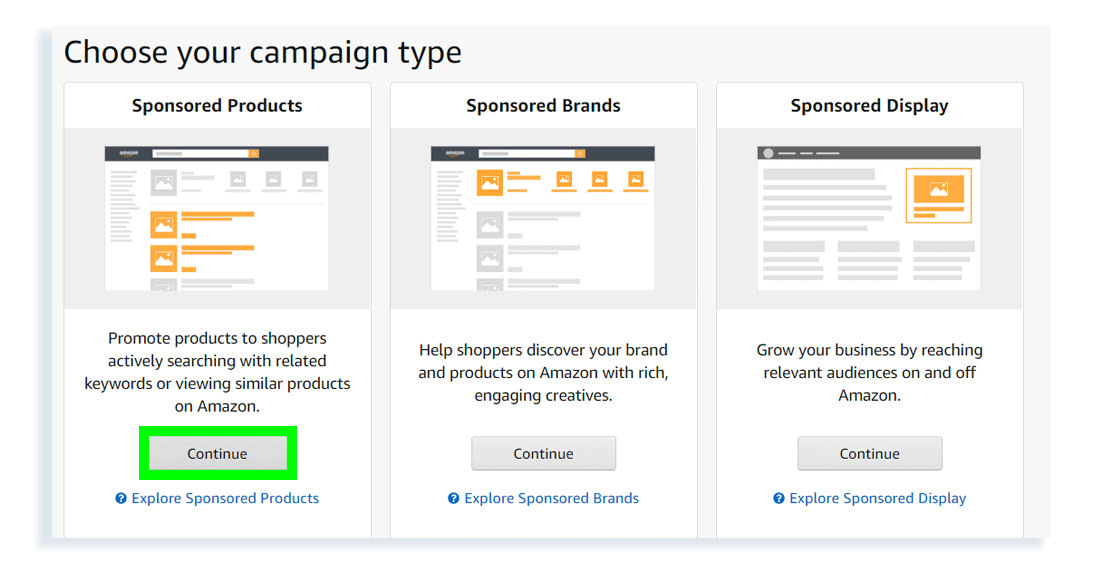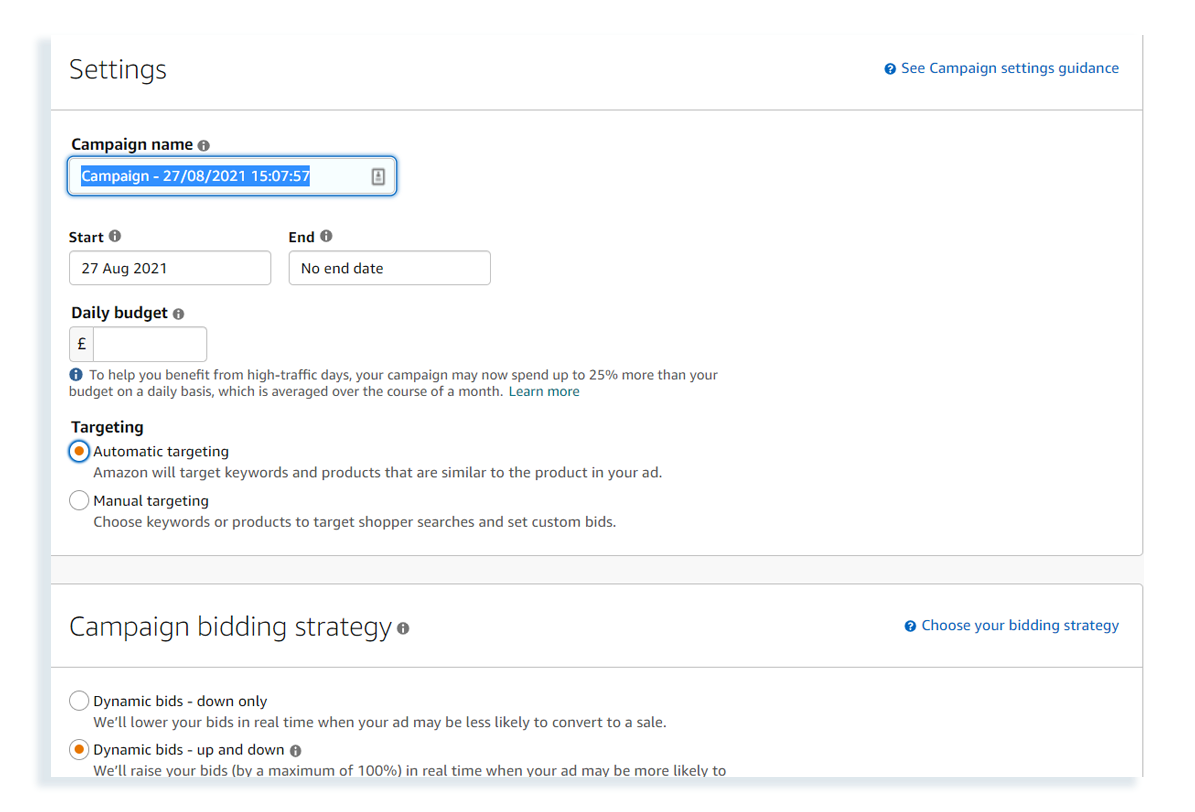Originally published on October 26, 2021, updated June 27, 2023
Menu
Join Our Email List
- Receive our monthly newsletter.
- Stay up to date on Amazon policies.
- Get tips to grow your business.
Get an overview of Amazon advertising best practices in this in-depth article from SellerApp.
If you want your Amazon business to succeed, you need to leverage Amazon ads to the fullest and build a robust advertising strategy.
Amazon Pay-per-Click (PPC) advertising allows brands, agencies, and third-party sellers to bid on high-converting keywords to advertise their products, which will eventually be displayed in Amazon’s search results and on competitor product pages.
Using this technique, sellers can easily convert page visitors to buyers — and then analyze their campaign performance to measure the important KPIs and identify which specific ads are driving the highest conversions. It’s such an efficient marketing method that three out of four Amazon sellers of all scales and sizes use this in 2021.
To get you up to speed, here’s a brief outline of what this article will cover:
Let's get started!
Amazon Sponsored ads is the advertising system that allows sellers to craft PPC campaigns for their listings in order to increase product visibility and organic rankings. Every time a shopper clicks on the ad, Amazon will charge the seller a certain amount based on the keywords they have bid on.
Before we get into more details, let’s walk you through the key metrics of Amazon PPC campaigns and how they work.
Advertising Cost of Sales (ACoS): This is the percentage of sales that sellers spend on advertising that product. For example, if the total sales generated from the ad is $25 and the amount spent on the ad is $5, your ACoS will be 20%. This is an important metric that measures the efficiency and ROI of your ad campaign.
Attributed Sales: The total sales generated on the first week of the campaign. This data can be found in the campaign performance report. The detailed report provides an overview of how much and from where your sponsored ad revenue is coming in the form of a pie chart.
Impressions: The number of times your ad appeared on Amazon’s search results or competitor product pages.
Clicks: The number of times shoppers clicked on your ad. It takes at most three days to eliminate invalid clicks from the report and present the actionable insights correctly.
Cost Per Click (CPC): The amount to be paid by sellers for every click by customers.
The aforementioned metrics can be found on SellerApp’s advertising dashboard.
Due to a paradigm shift of consumer shopping from brick-and-mortar stores to online sites — and, overwhelmingly, to Amazon.com — sellers on Amazon have a huge opportunity to elevate their sales. But the influx of online traffic also brings in more competitors trying to hoard sales. This is why you need Amazon PPC in your business to increase your rankings and listing visibility. When you leverage Amazon’s Sponsored ads, you can reap several of its benefits. Some of them are:
High Rankings: For greater visibility, you need to target the most relevant keywords. This, in turn, will rank your product higher in Amazon SERPs and improve your conversion rates and overall sales.
Cost-effectiveness: Amazon PPC is also considered cost-effective as it charges sellers only when customers click on the ads, and not the number of times the ad appeared on Amazon.
Global Visibility: Amazon PPC campaigns can generate millions of views in no time. It helps your products reach wider audiences who are also relevant to your listings.
Here are some of the important tips you must follow to create a robust Amazon PPC management strategy:
Related reading: 6 Mistakes to Avoid with Your Amazon PPC Advertising


You have multiple options for how to configure your Sponsored Products ad campaign:
You can also create manual-targeting Sponsored Product ads, and SellerApp's Keyword Research tool can help. Look for relevant, high-converting keywords to reach the right customers. You may also perform a reverse ASIN lookup to find out what your competitors are targeting.
Sponsored Product ads are those that appear in Amazon SERPs and product listing pages. They are similar to organic listings, which makes them the most preferred ad type for Amazon sellers. According to Amazon, ASINs averaged a 40% weekly increase in the number of units ordered within the first year of launching a Sponsored Products campaign.
While crafting Sponsored Product ads, you must consider two types of keyword targeting strategies: automatic and manual.
Manual Targeting: Manually select the keywords that best resonate with your product. You can select different match types for these search terms and reduce bids or eliminate low-performing/non-performing keywords. This gives you more autonomy over ad spend and overall ad KPIs than automatic targeting.
Automatic Targeting: Automatic targeting provides minimal control over PPC campaigns. You can only set a CPC bid and add all the necessary keywords while Amazon decides how to display it and which category of shoppers to target.
Got it? Let's move on to the other two Sponsored ad types.
Sponsored Brands allow Amazon sellers to build awareness for different products simultaneously with more innovative visuals than Sponsored Products. These ads can be launched using two formats: headline banners at the top of SERPs and a video further down on the page.

Sponsored Display ads help to retarget existing customers or site visitors who have already visited listing pages. Unlike Amazon Sponsored Product or Brand ads, Display ads can be found anywhere on Amazon’s affiliated sites like Facebook, Instagram, Hotstar, and mobile apps.
Now that you are well aware of the ins and outs of Amazon ads, it's time to understand how to optimize Amazon PPC campaigns even more effectively.
Select the listings you want to promote. You can opt for the right listing based on a variety of factors such as product sales, ranking, and demand. Whether you select Sponsored Product ads or Display ads, there are several aspects that will determine your decision. For instance, if you are selling luxury items, Sponsored Brand ads can bring about brand awareness and high credibility. This, in turn, will increase your conversion rates and lead to more sales.
Amazon Advertising is a significant strategy to broaden Amazon sales velocity. It has multiple PPC ad options to choose from. We recommend that you try all the ad types Amazon offers before you make a decision to stick to one, especially automatic-targeting and manually-targeted Sponsored Product ads. These two will give you a good idea about the keywords/search terms types that work best for your product when analyzing sales data from every campaign type.
Whether you select an automatic or manual campaign, optimizing the product listing and making it SEO-friendly should be a top priority if you want to achieve a higher ranking on Amazon SERPs. This technique will also help you to make the most of your ad campaigning budget.
Compile a list of relevant keywords for your listing and incorporate them in your product title, product description, and features. Be cautious not to overuse them—keyword stuffing can work to your disadvantage. Use professional, high-resolution images for display that highlight your product's best features and show it in action.
With Amazon Sponsored Product ads, sellers can bid for specific keywords or product categories. If you select keyword targeting, your product listings will appear depending on customer search queries. You can then monitor campaign performance by keyword or product.
You can also get a visual representation of keyword performance using the Search Term Analysis feature on SellerApp. It shows the number of keywords in three performance categories:
Like keywords, you can also monitor your product performance using the same KPIs. Not only that, but you can also get a detailed analysis of your conversion funnel and track the following metrics:
This Conversion Funnel is a visual representation of your impressions, clicks, and orders. It also tells you whether these metrics have increased or decreased over the past 14 days.
Strategizing your PPC campaigns may sound difficult because there is no one-size-fits-all plan that suits every campaign type or industry vertical.
Amazon is the largest marketplace for third-party sellers and is highly competitive in nature. Therefore, implementing the trial-and-error ad method and monitoring your Amazon ad campaigns every three to four weeks will give you optimum results. Not to mention, these ads drive greater ROI and sales when you track significant metrics and make informed decisions based on that data.
Originally published on October 26, 2021, updated June 27, 2023
This post is accurate as of the date of publication. Some features and information may have changed due to product updates or Amazon policy changes.
These Stories on Advertising
14321 Winter Breeze Drive
Suite 121 Midlothian, VA 23113
Call us: 800-757-6840





Copyright© 2007-2025 eComEngine, LLC. All Rights Reserved. eComEngine®, FeedbackFive®, RestockPro®, and SellerPulse® are trademarks or registered trademarks of eComEngine, LLC. Amazon's trademark is used under license from Amazon.com, Inc. or its affiliates.
No Comments Yet
Let us know what you think